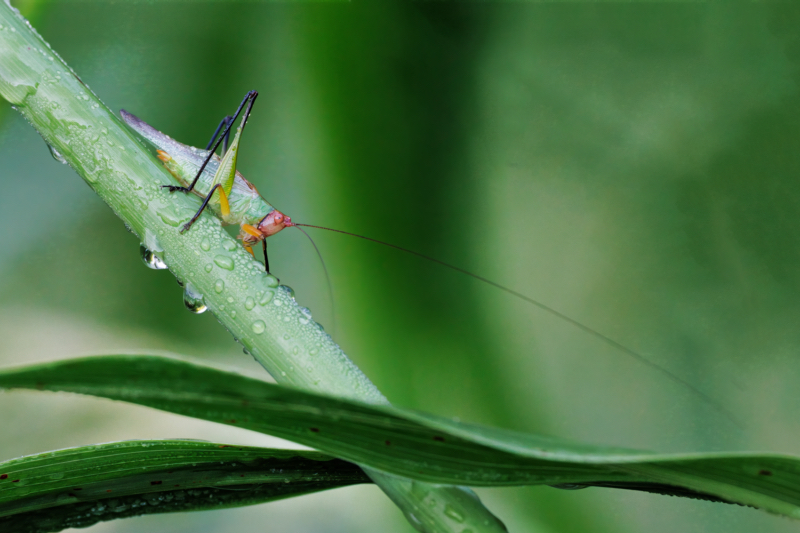While out on a photo walk back on August 31, 2022 near Tuff Pond, I came across an unusual insect perched on a stem of Johnson Grass. At first glance, I could tell it was a type of katydid, but I wasn’t sure which species. Upon closer inspection, I noticed its head was red.

I sent a photo to my friend and fellow photographer, Mia McPherson to get her input on the specific type of katydid. She’s much more knowledgeable than me when it comes to insect identification. Mia confirmed that this was likely a Red-headed Meadow Katydid, scientific name Orchelimum erythrocephalum.
According to Mia’s research, the Red-headed Meadow Katydid is uncommon in Oklahoma. It’s typically found further east, with its range centered on the Appalachian Mountains. So this sighting from late last summer seems to be quite rare for our area!
Red-headed Meadow Katydid Facts:
- The red coloration on the head of the Red-headed Meadow Katydid is thought to serve as a warning to potential predators that they contain toxic chemicals and taste bad.
- These katydids produce very loud mating calls, with males vibrating their wings to produce a song described as a long buzzing trill. They use these mating calls to attract females from quite a distance away.
- Red-headed Meadow Katydids are adept jumpers, able to leap several feet to evade predators. Their powerful back legs allow them to jump up to 25 times their body length.
- They have small hearing organs located on their front legs to detect the mating calls of nearby katydids. The ears essentially work like tiny microphones.
- Females lay their eggs in the stems of plants. The eggs overwinter and hatch the following spring.
- Nymphs look like tiny adults when they first hatch, just lacking fully developed wings. As they molt and grow, their wings reach full size.
Equipment Used:
- Camera: Canon EOS R5
- Lens: Canon RF 100-500 mm F4.5-7.1 L IS USM
Technical Details:
- Location: Sequoyah National Wildlife Refuge (Oklahoma)
- Date and Time Taken: August 31, 2023 (08:13 A. M.)
- Aperture: f10
- Shutter speed: 1/800
- ISO: 3200 (Auto)
- Exp. Comp.: 0
- Focal Length: 500 mm

Thank you for the very kind mention, Creek! I’m no expert but I do love bugs!